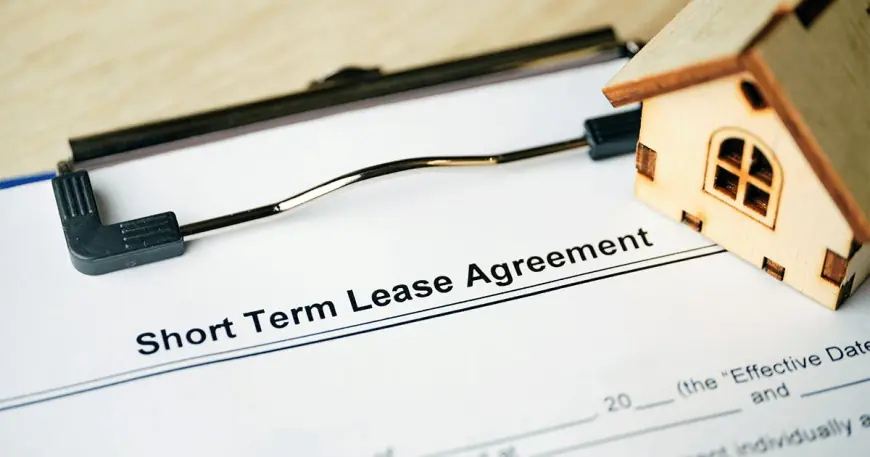Enfranchisement Simplified How to Take Control of Your Property
Learn how to gain control of your property through enfranchisement. Explore benefits, legal steps, and tips for success in this comprehensive guide.

Enfranchisement offers a path to take control of your property and secure a more stable and financially sound future. In this comprehensive guide, we will break down the complexities of enfranchisement and provide you with actionable insights to navigate this process effectively.
What Is Enfranchisement?
Enfranchisement refers to the legal process through which leaseholders gain greater ownership rights over their property. This can take two primary forms:
-
Lease Extension: Extending the length of your lease to avoid issues associated with short leases.
-
Collective Enfranchisement: Where multiple leaseholders band together to purchase the freehold of their building.
Understanding these options is critical for ensuring you make informed decisions about your property’s future.
Key Benefits of Enfranchisement
-
Long-Term Security: Eliminates the risks associated with declining lease terms.
-
Increased Property Value: Properties with extended leases or freehold status tend to be more attractive to buyers.
-
Greater Control: Gain autonomy over property management and reduce reliance on freeholders.
-
Cost Savings: Avoid escalating ground rent and service charges.
Why Should Leaseholders Consider Enfranchisement?
Leasehold properties come with inherent limitations. Over time, the lease term diminishes, potentially reducing the property’s value and making it harder to sell or remortgage. By pursuing enfranchisement, leaseholders can mitigate these risks and secure their property rights.
Challenges of Leasehold Ownership
-
Depreciating Asset: A short lease significantly impacts the property’s market value.
-
Escalating Costs: Ground rent and service charges can increase unexpectedly.
-
Limited Autonomy: Leaseholders often face restrictions on property modifications and usage.
By understanding the challenges of leasehold ownership, you can better appreciate the importance of taking proactive steps toward enfranchisement.
The Legal Framework for Enfranchisement
Enfranchisement is governed by specific legislation, primarily the Leasehold Reform Act 1967 and the Leasehold Reform, Housing and Urban Development Act 1993. These laws outline the rights of leaseholders and the procedures involved in acquiring extended leases or freeholds.
Key Eligibility Criteria
Before embarking on the enfranchisement process, ensure you meet the following criteria:
-
Lease Length: Typically, your lease must have been granted for an original term exceeding 21 years.
-
Residential Use: The property must be primarily residential, not commercial.
-
Ownership Period: In some cases, you need to have owned the property for a minimum duration (e.g., two years).
Steps to Take Control of Your Property
The enfranchisement process can seem daunting, but breaking it down into manageable steps simplifies the journey. Here is a step-by-step guide to taking control of your property through enfranchisement:
1. Assess Your Lease
Start by reviewing your lease terms to understand:
-
The remaining lease duration.
-
Any clauses that may impact your ability to extend or purchase the freehold.
-
The ground rent and service charge obligations.
2. Seek Professional Advice
Consulting a solicitor or a specialist surveyor is essential. These professionals can:
-
Provide a valuation of the enfranchisement cost.
-
Guide you through the legal intricacies.
-
Help you navigate negotiations with the freeholder.
3. Obtain a Property Valuation
A property valuation is critical for estimating the cost of enfranchisement. Factors influencing the valuation include:
-
Remaining lease length.
-
Ground rent terms.
-
Property location and market value.
4. Serve a Formal Notice
If you decide to proceed, your solicitor will draft and serve a formal notice to the freeholder. This notice should include:
-
Your intention to enfranchise.
-
The proposed premium (price) for the lease extension or freehold purchase.
5. Negotiate Terms
Following the formal notice, negotiations with the freeholder begin. While reaching an agreement is often straightforward, disputes may arise. If no resolution is achieved, the matter can be referred to the First-tier Tribunal (Property Chamber).
6. Complete the Transaction
Once terms are agreed upon, both parties finalize the transaction. You will then:
-
Sign the necessary legal documents.
-
Pay the agreed premium and associated costs.
Costs Involved in Enfranchisement
Understanding the costs associated with enfranchisement is crucial for effective financial planning. Here is a breakdown of potential expenses:
Premium Cost
The premium is the main cost and depends on factors such as:
-
Lease length remaining.
-
Ground rent.
-
Property value.
Additional Costs
-
Legal Fees: For solicitors managing the process.
-
Surveyor Fees: For property valuation and negotiation support.
-
Tribunal Costs: If disputes escalate to legal proceedings.
-
Stamp Duty: Applicable if the premium exceeds a certain threshold.
Collective Enfranchisement: A Collaborative Approach
For leaseholders in multi-unit buildings, collective enfranchisement is often the preferred route. This involves multiple leaseholders joining forces to purchase the freehold.
Benefits of Collective Enfranchisement
-
Shared Costs: Split the financial burden among participating leaseholders.
-
Unified Management: Gain control over building maintenance and management decisions.
-
Stronger Negotiating Power: A collective effort often yields better results.
Key Steps for Collective Enfranchisement
-
Form a leaseholder group and appoint representatives.
-
Hire a solicitor and surveyor experienced in collective enfranchisement.
-
Serve an Initial Notice to the freeholder, outlining the group’s intention to purchase the freehold.
-
Negotiate terms and finalize the transaction.
Tips for a Smooth Enfranchisement Process
To ensure a successful and hassle-free enfranchisement experience, consider these practical tips:
Do Your Research
Familiarize yourself with the legal framework and process. Knowledge is a powerful tool in negotiations.
Choose the Right Professionals
Engage experienced solicitors and surveyors who specialize in leasehold enfranchisement.
Plan Your Finances
Account for all potential costs and set aside additional funds for unexpected expenses.
Communicate Effectively
Maintain open and respectful communication with the freeholder throughout the process. This can help avoid unnecessary disputes.
The Future of Leasehold Reform
The UK government has expressed intentions to reform leasehold laws further, aiming to make enfranchisement more affordable and straightforward. Proposed changes include:
-
Reducing the cost of lease extensions.
-
Abolishing ground rents for new leases.
-
Simplifying the collective enfranchisement process.
What This Means for Leaseholders
While these reforms are promising, the timeline for implementation remains uncertain. Leaseholders should weigh the benefits of acting now versus waiting for legislative changes.
Conclusion
Enfranchisement empowers leaseholders to secure long-term control and value for their properties. Whether you’re seeking a lease extension or collective enfranchisement, understanding the process and enlisting professional support are critical steps to success. By taking control of your property, you invest not only in its financial value but also in your peace of mind.
Start your journey toward enfranchisement today, and transform your leasehold property into a lasting asset for generations to come.
What's Your Reaction?
 Like
0
Like
0
 Dislike
0
Dislike
0
 Love
0
Love
0
 Funny
0
Funny
0
 Angry
0
Angry
0
 Sad
0
Sad
0
 Wow
0
Wow
0


















































